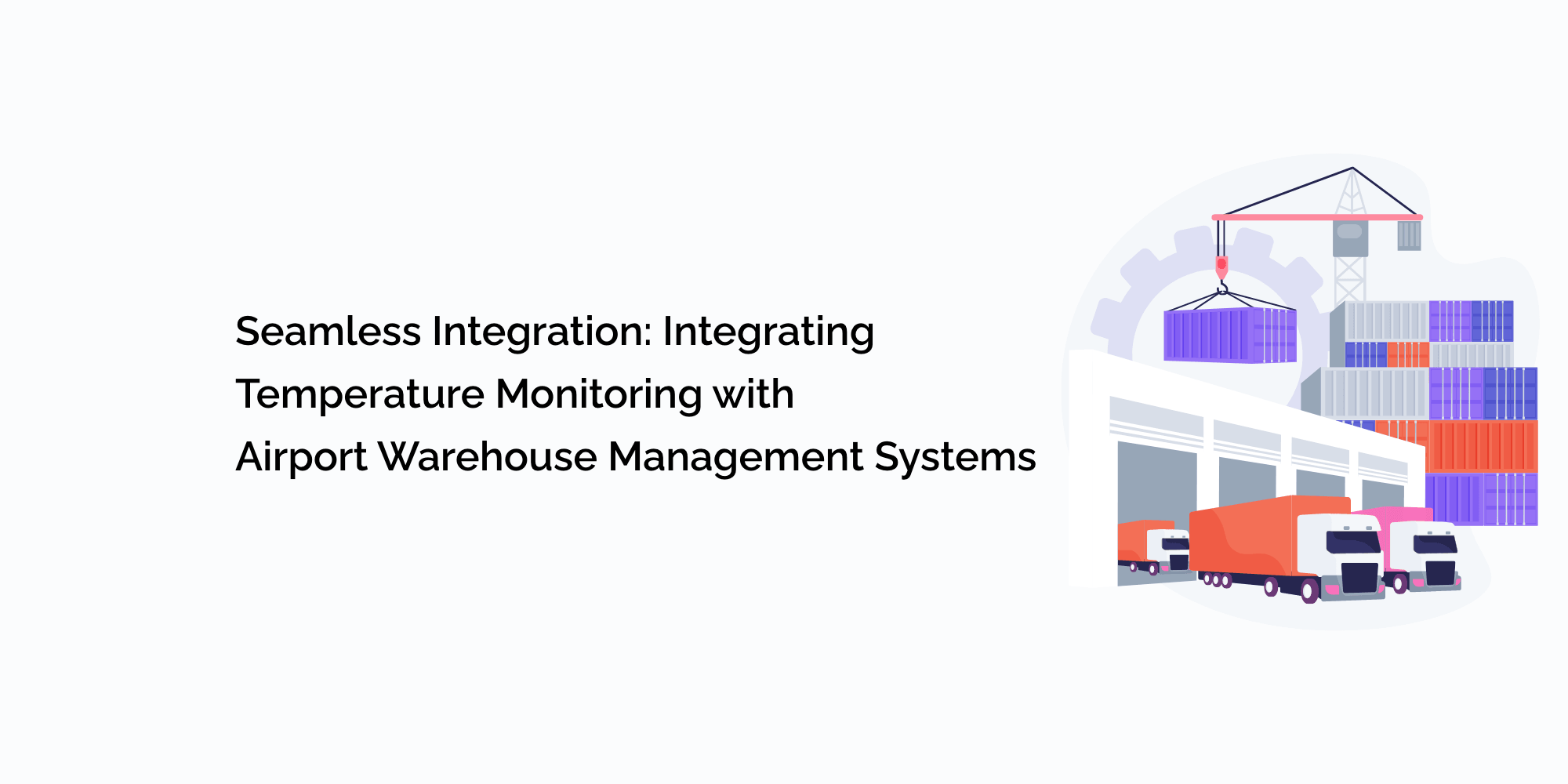Airport warehouses are vital components of the global supply chain, handling a diverse range of goods, including perishable and temperature-sensitive items. Ensuring optimal temperature conditions within these warehouses is crucial to preserving product quality and regulatory compliance.
Traditionally, temperature monitoring and warehouse management have been treated as separate processes, leading to inefficiencies and potential risks. However, with advancements in technology, the seamless integration of temperature monitoring systems with airport warehouse management systems (WMS) has become a game-changer.
In this comprehensive blog, we explore the significance of seamless integration, the benefits it offers to airport warehouses, and how it streamlines operations for enhanced efficiency and productivity.
-
The Importance of Temperature Monitoring in Airport Warehouses
Temperature monitoring is a critical aspect of airport warehouse operations, especially for handling temperature-sensitive goods such as pharmaceuticals, fresh produce, and perishable items. Maintaining the right temperature range throughout the storage and transportation process is essential to prevent spoilage, ensure product integrity, and meet regulatory requirements. Traditional temperature monitoring methods, relying on manual checks or stand-alone systems, often lead to delays, human errors, and incomplete data, posing risks to warehouse operations.
-
Understanding Airport Warehouse Management Systems (WMS)
Warehouse management systems (WMS) are sophisticated software solutions designed to optimize warehouse operations, including inventory management, order processing, and shipment tracking. WMS streamlines various processes, improving efficiency and reducing operational costs. However, without seamless integration with temperature monitoring systems, warehouses may lack real-time visibility into temperature conditions and the ability to respond promptly to potential deviations.
-
The Benefits of Seamless Integration
a. Real-Time Data Insights:
Integrating temperature monitoring systems with WMS provides real-time data insights into temperature conditions. Warehouse managers can access accurate and up-to-date information on temperature fluctuations, enabling them to make informed decisions promptly.
b. Improved Inventory Management:
With real-time temperature data integrated into WMS, warehouse managers can better manage temperature-sensitive inventory. The system can automatically trigger alerts when temperature thresholds are breached, preventing spoilage and ensuring regulatory compliance.
c. Enhanced Quality Control:
Seamless integration allows for better quality control of temperature-sensitive goods. Warehouse managers can easily track temperature history for individual products, ensuring that they are stored and transported under the required conditions.
d. Streamlined Workflows:
Integrating temperature monitoring with WMS eliminates the need for manual data entry and reduces paperwork. This streamlines workflows, saving time and effort for warehouse staff.
e. Proactive Alert Systems:
The integrated system can set up proactive alert systems to notify relevant personnel in the event of temperature deviations, enabling swift corrective action to prevent product spoilage.
f. Data Analytics:
The integration of temperature monitoring data with WMS provides valuable insights for data analytics. Warehouse managers can analyze temperature trends, identify patterns, and make data-driven decisions to optimize warehouse operations.
-
Types of Temperature Monitoring Systems for Integration
a. Internet of Things (IoT) Sensors:
IoT sensors are equipped with wireless connectivity, enabling them to transmit temperature data to a centralized platform. The data can be seamlessly integrated into the WMS for real-time monitoring and analysis.
b. RFID Temperature Tags:
Radio Frequency Identification (RFID) tags with temperature sensors can be attached to individual products. These tags continuously monitor and record temperature data, which is then integrated into the WMS for tracking and quality control.
c. Cloud-Based Monitoring Solutions:
Cloud-based temperature monitoring systems allow easy access to temperature data from anywhere, making it convenient for integration with WMS.
-
Overcoming Challenges in Integration
a. Compatibility:
Ensuring compatibility between temperature monitoring systems and WMS may be a challenge. It is essential to select systems that can seamlessly integrate or invest in solutions that offer compatibility through APIs and data connectors.
b. Data Security:
Integration involves sharing sensitive temperature data between systems. Ensuring data security and compliance with privacy regulations is critical to protect sensitive information.
c. Training and Familiarization:
Warehouse staff may require training and familiarization with the integrated system to maximize its benefits. Providing adequate training and support is essential for a smooth transition.
-
Case Studies of Successful Integration
a. Heathrow Airport, London:
Heathrow Airport integrated temperature monitoring sensors with its WMS to optimize temperature-sensitive cargo operations. The integration resulted in a 30% reduction in temperature-related incidents and improved overall warehouse efficiency.
b. Singapore Changi Airport:
Changi Airport integrated IoT-based temperature monitoring with its WMS to enhance its pharmaceutical handling processes. The integrated system improved temperature control, reduced spoilage, and ensured regulatory compliance.
Conclusion
Seamless integration of temperature monitoring with airport warehouse management systems is a transformative step towards optimizing warehouse operations. The real-time data insights, improved quality control, streamlined workflows, and proactive alert systems offered by the integration enhance efficiency and productivity in temperature-sensitive cargo handling.
Overcoming challenges in integration requires careful planning and selecting compatible systems while ensuring data security and staff training. By embracing the benefits of seamless integration, airports can strengthen their supply chain, minimize risks, and deliver superior services to airlines, suppliers, and customers alike.








